Quasi Dragon Studies Docs
Dropping 22nd August - 2023
IRL event 25th July: See Verse.works for details
QDS is about experimentation, people, risk, discussion, and the essence of what art really is.
Maybe 5 tiles get minted. Maybe thousands. However many, this project will be a success if it gets people talking, gets people questioning, makes people happy, makes people angry.
Maybe it becomes a step towards making art more ‘for everyone’. Maybe in a few years kids at the Tate in London find themselves participating in an artwork with kids in Nairobi. Maybe there’s a kind of art, yet to come into existence that really brings people together.
Or maybe people hate it, think it’s a gimmick, and think it’s everything that’s wrong with art today.
I hope more the former than the latter. I guess the whole point of QDS is that we’ll find out
Overview
Quasi Dragon Studies is an art experiment in community co-creation. For 25 years I’ve been exploring ways of compositing sets of simple artworks to form new more complex artistic language and more ambitious compositions. This project is an algorithmic, Web 3 extension of that personal modus operandi.
The rapid evolution of generative art and the attention it has received from the Web 3 community makes it an exciting time to be a creative coder. However, ten years from now I feel the algorithmic approach may just be one of many methodologies in the practice of the new internet native artist. Perhaps what will be seen as the more interesting and seismic revolution in art created in the Web 3 era is the blurring of the boundary between artist and the collecting community. We may be witnessing the early evolution of a new breed of decentralized artists.

In this project, collectors mint art tiles with randomly assigned edge properties that enable them to be joined together to create new artworks using a tool called the Composite Builder. Collectors can choose to participate in the project in two ways:
- Treat the Composite Builder as a creative playground with the incentive of making the most visually compelling composites and be led by their own artistic instincts.
- Build composites with strict joining rules, invest time, energy and money to collect specific tiles and create hard-to-make limited edition Black and White Dragons. The incentive here being creating quantifiable rarity which has become a significant feature of Web 3 art.
One open question framed by the project is which incentive does the community care more deeply about?
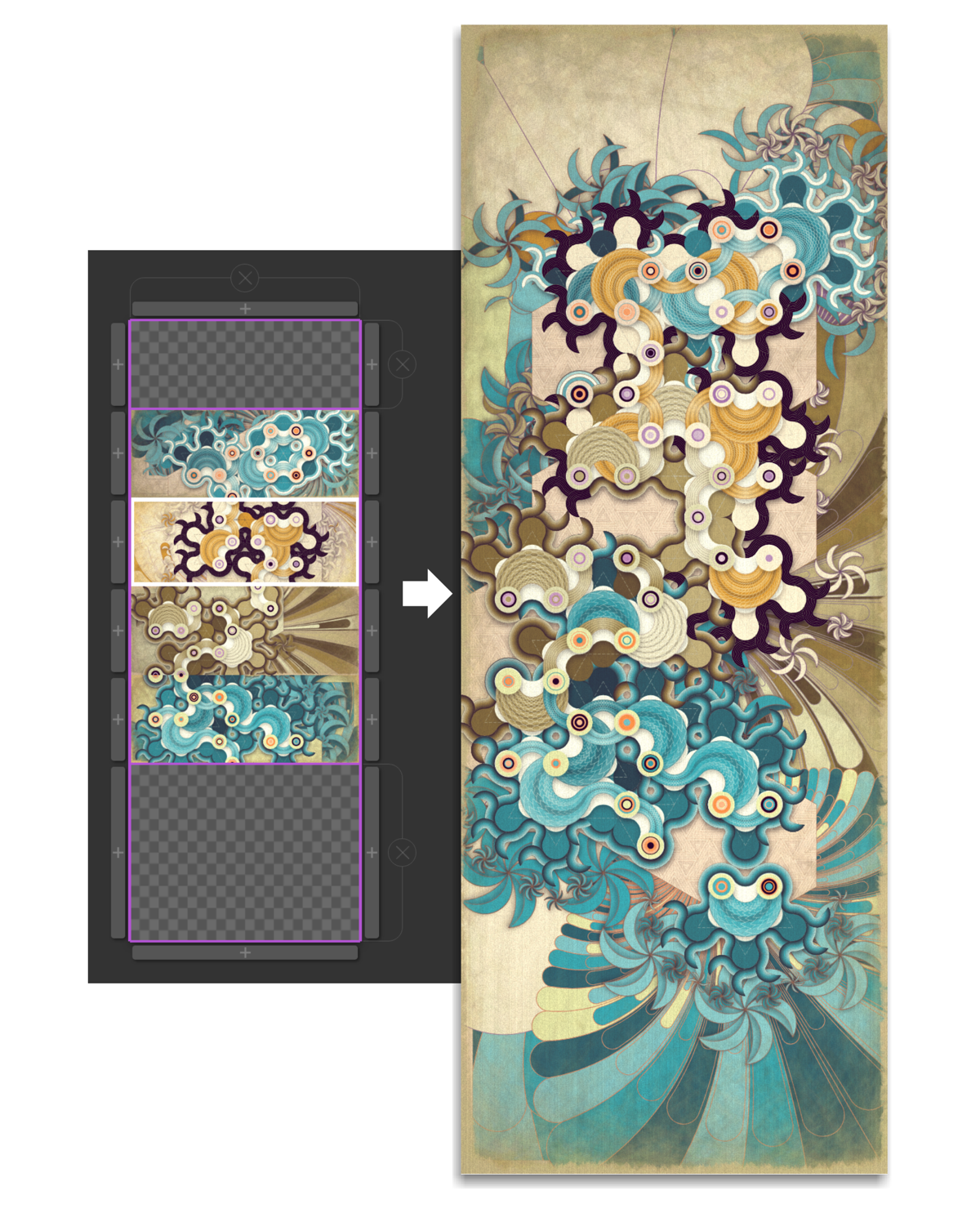
Technical Summary
Main points
- Tiles: 100 USD.
- Tile supply open for 500hrs.
- No allow list.
- Tiles have the property that they can be joined into composites using the ‘Composite Builder’.
- Composites can be minted (converted) into new NFTs for free from the Composite Builder.
- Composite Builder provides easy-to-use search tools to find joining tiles in the secondary market.
- Tiles are burned when converting to a composite, decreasing tile pool.
- Once a composite is minted (converted) it cannot be added to or dismantled back into single tiles.
- Single tiles can also be converted to composite NFT collection either with or without blanks.
- There will be one final composite collection of approximate size equal to ( supply / average composite size ).
- There is no time limit to convert tiles to composites after tile supply closes.
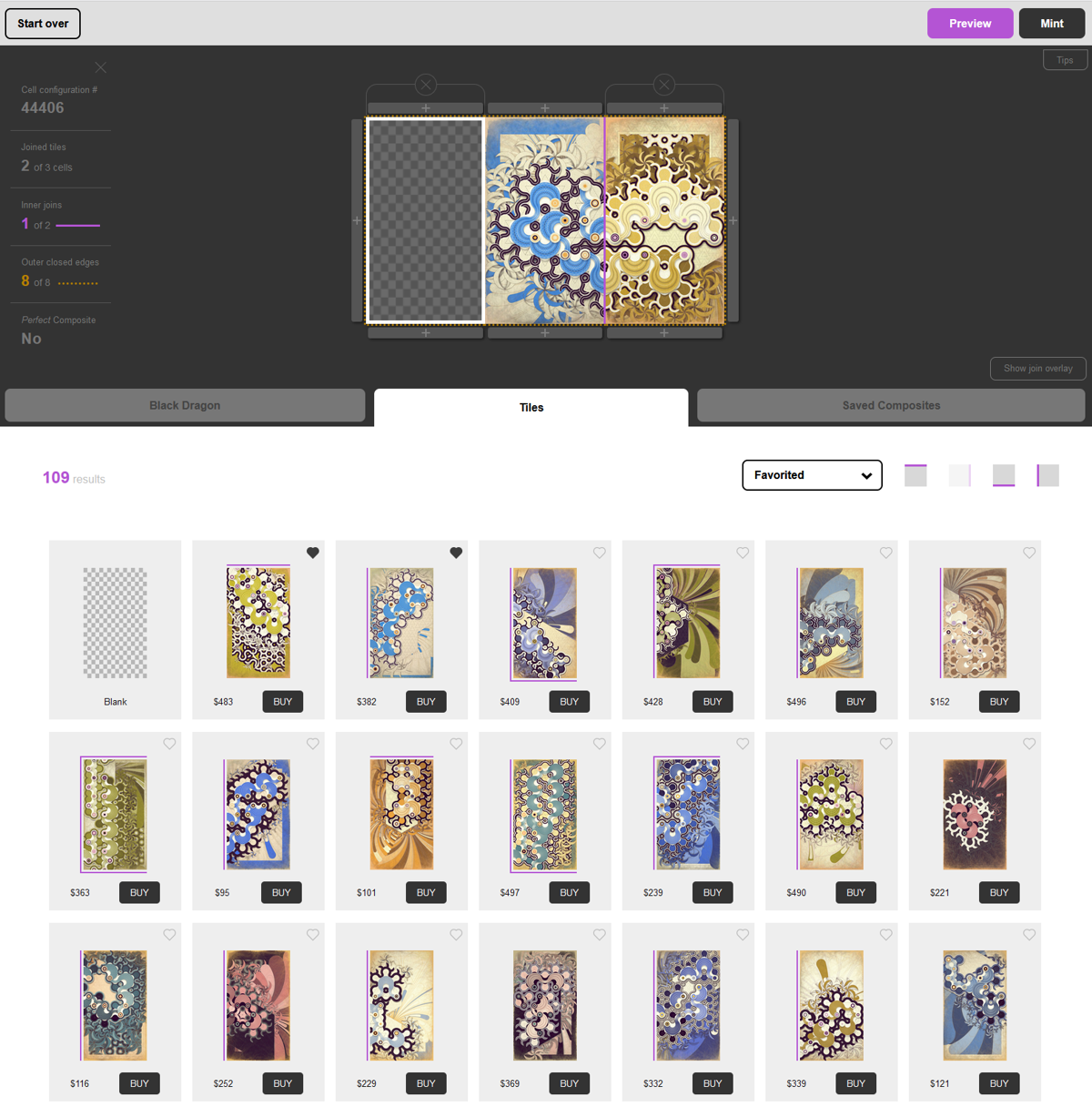
Tiles
- Tiles are randomly generated from a hash like a conventional Long Form project
- Tiles only have traits to enable joining in the composite builder
- Tiles can be traded on Verse secondary gas free
- There are 6 tile aspect ratios defined in Join Units (See Below)
- All tile joining traits are randomly generated so no tile is indispensable as tiles with identical joining traits can always be minted again.
Join Units
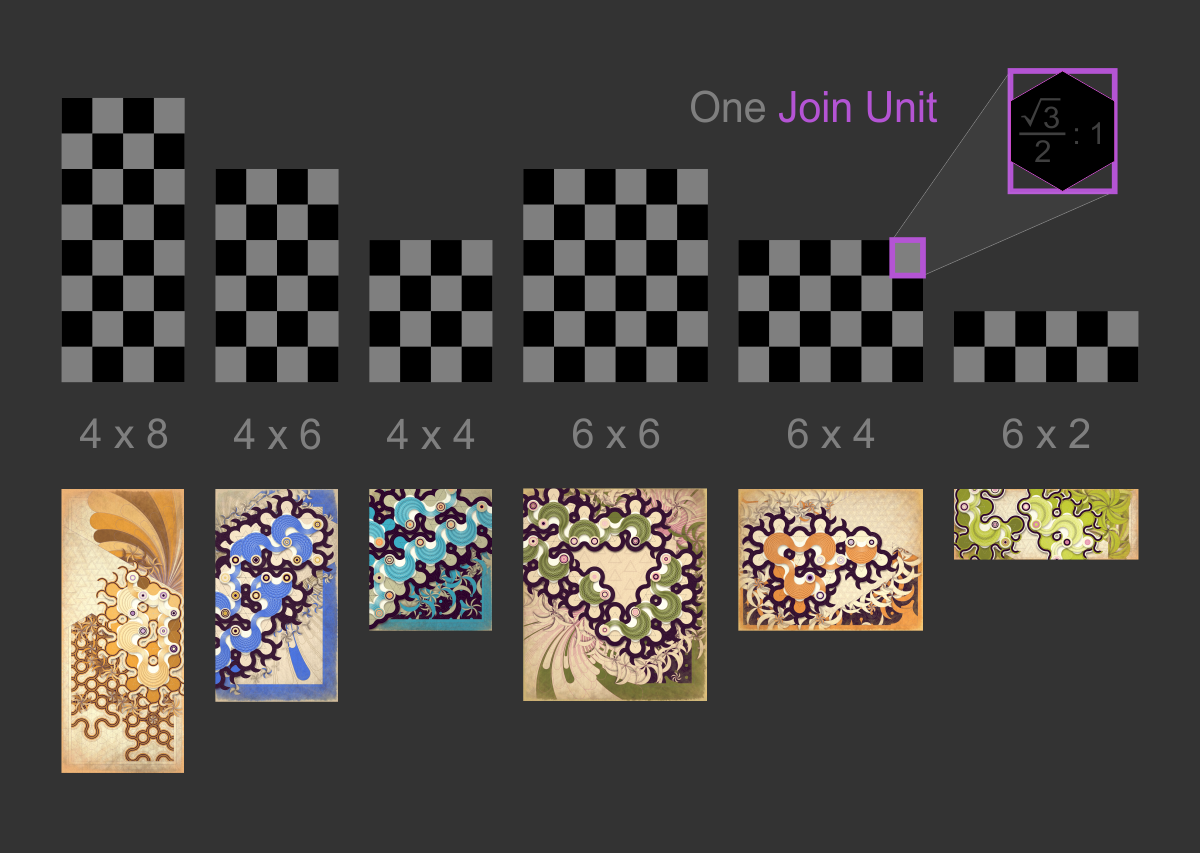
Composites
A composite is a rectangular arrangement of tiles and empty cells called blanks. This arrangement is fed to the Quasi Dragon Studies algorithm where the artwork elements in each tile are merged to make a new artwork. This composite can be minted into a new NFT from the Composite Builder tool. The tiles used will be burned, reducing the pool of available tiles. Composites are free to mint. All tiles that form a composite must be present in the same wallet used to mint the composite NFT.
Blanks
Blanks are just spacers, there are no blank tiles as such. They are free to add and can be placed adjacent to both open and closed tile edges (edges explained below). Using blanks can expand the elements in an adjacent tile and provide a way to explore even a single tile in different configurations. Using blanks also enables anyone with any combination of tiles to make composites without following the strict joining rules that collectors need to follow to build Black and White Dragons.
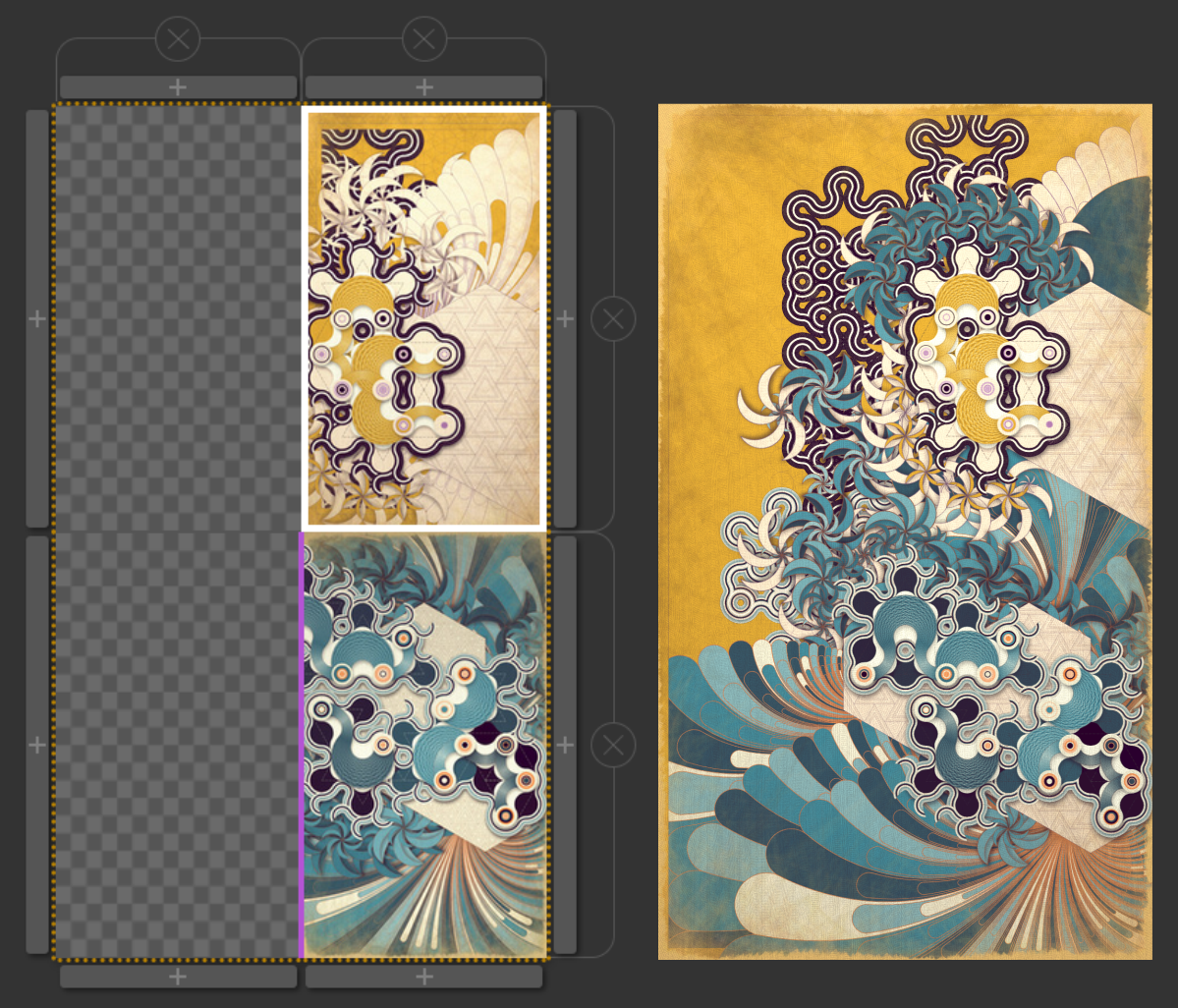
Dragon Bodies
Tile joining traits correspond to the intersection of Dragon Bodies with each tile edge. No other elements other than the Dragon Bodies affect joining traits.
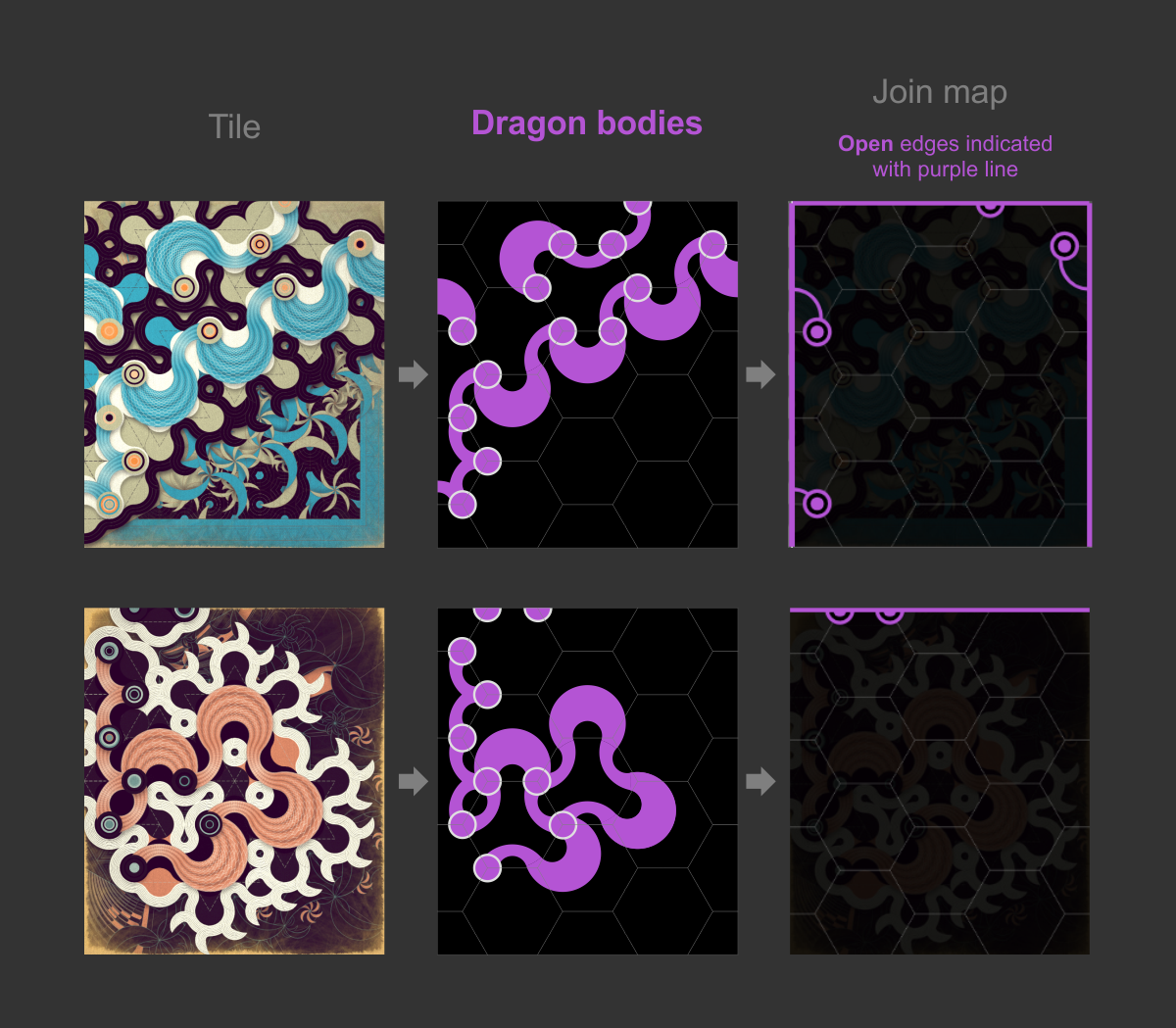
Join maps
In the composite builder a Joining Map can be viewed to help builders see where the valid joins are. The composite builder automatically searches for valid joining tiles so this feature is mainly just to help build visual intuitions about the process.
Open Edges
Open edges are tile edges that are intersected by at least one Dragon Body (shown above). All other elements intersecting the tile edge are ignored. To join two open edges the joining traits must match such that the Dragon Bodies are continuous through the join.
Closed Edges
Closed edges are Tile edges that are NOT intersected by any Dragon Bodies. Any two Closed edges can be joined together.
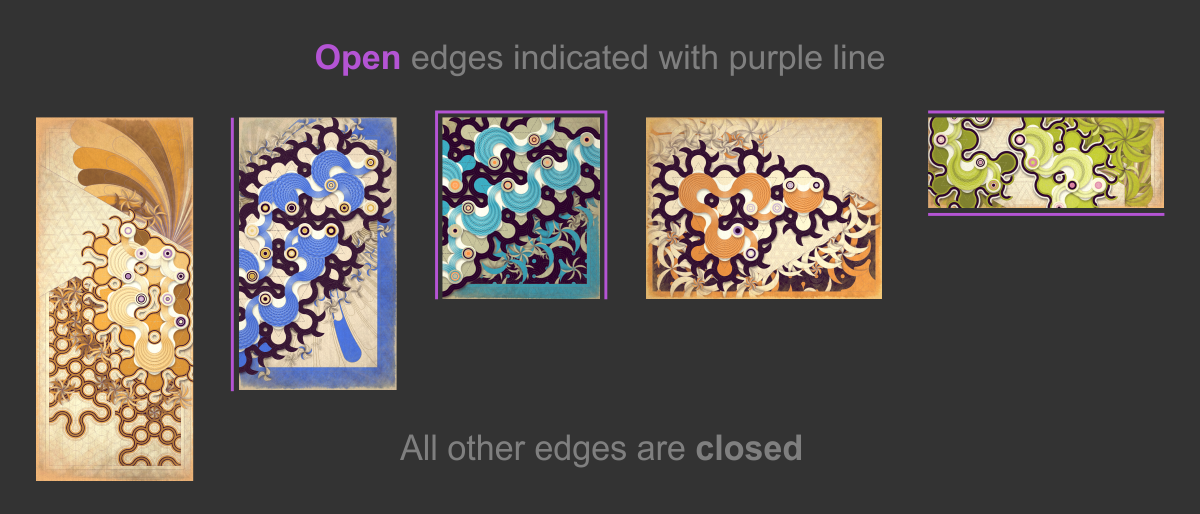
The 3 Tile Joining Rules
- Only an Open edge can join to another open edge with the same joining traits. (So that the Dragon bodies are continuous)
- Any two Closed tile edges can join.
- Blanks can join to any tile edge, either Open or Closed.
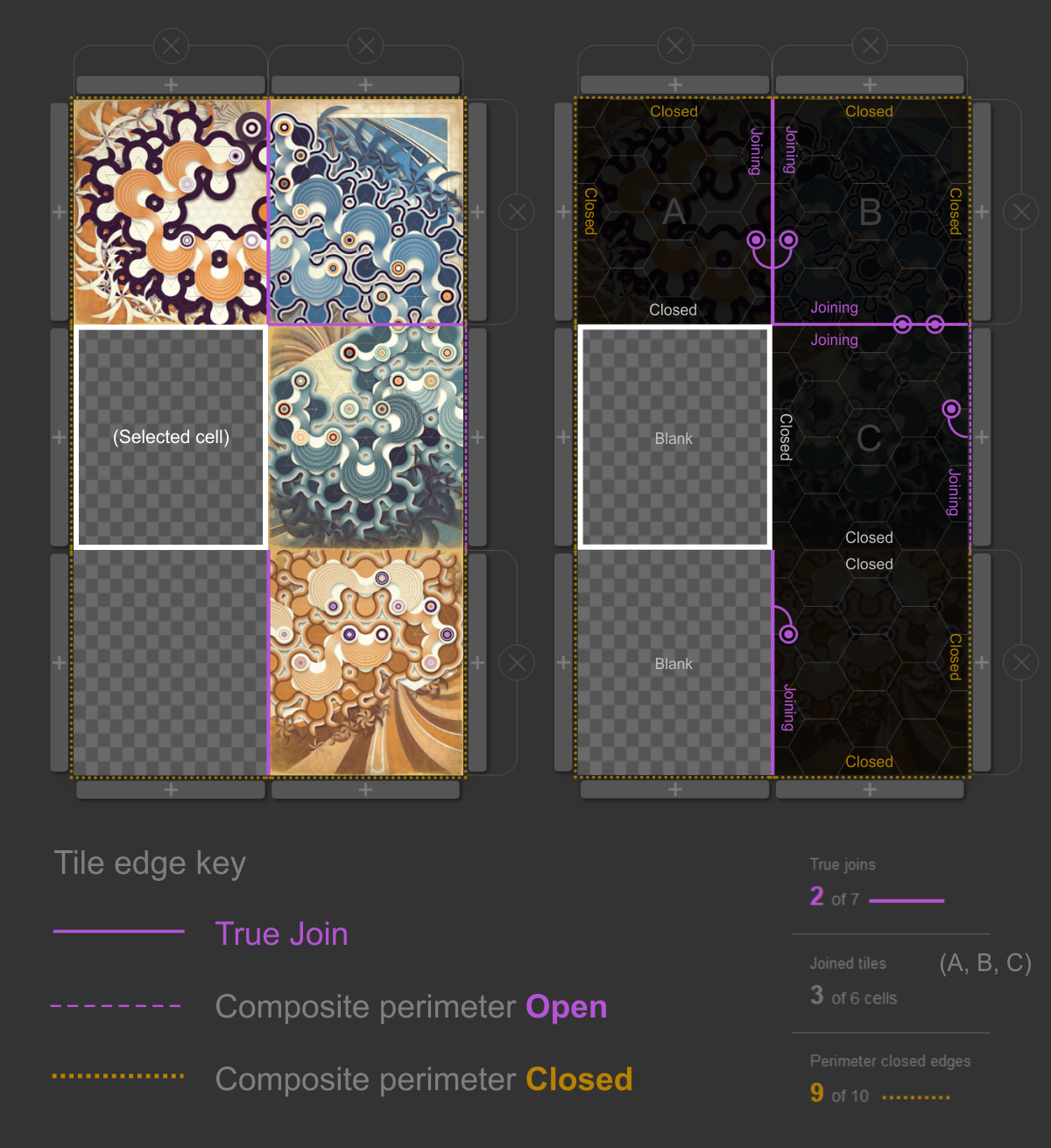
True Joins
A True Join is just the name for an open edge to open edge join (see above). It's impossible to make a join between two open edges that do not have matching join traits. Joins between tiles and blanks and joins between closed edges are NOT True Joins.
Composite perimeter
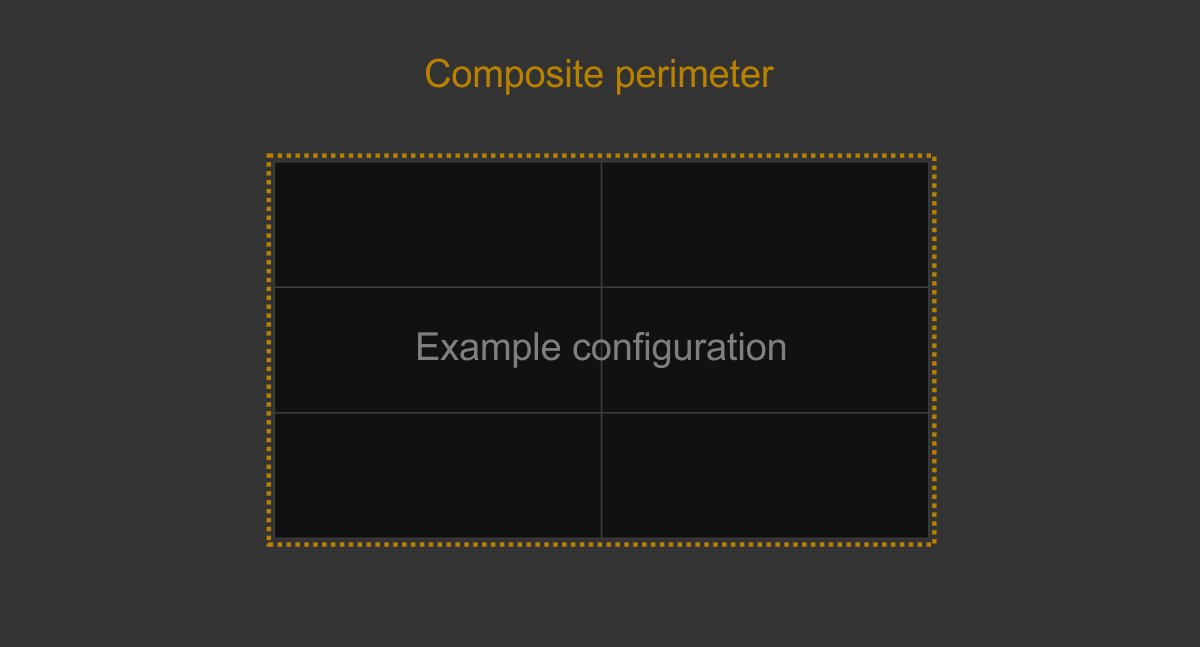
Composite Cell Configuration
- Composites cannot exceed 18 Join Units in width and 12 Join units in height.
- At least one tile must be present in a composite
- There is a maximum of 12 tiles permitted in a composite
- There is no limit on the number of blanks used in a composite as long as the first two rules are not broken.
For Geeks and Degens only
! Proceed with caution !
Black & White Dragons summary
- There is are two special sets of Black & White Dragon composite configurations.
- To mint a Black or White Dragon composite strict joining conditions must be met
- Only one of each of the Black and White Dragon configurations can be converted to these rare composites.
- The tile colors in a Black and White Dragon composite are converted to the distinctive color spaces.
- As with all composites original tiles are burned to create a new composite NFT
- The conversion of Black or White Dragons no longer affect the supply mechanism.
- Black and White Dragons are simply rare, hard to build outputs that may or may not all get converted.
- There are no Black or White Dragon tiles! Black and White Dragon composites are made from regular tiles and color spaces are changed when converted.

Black & White Dragon configurations
The combined Black and White Dragon configuration sets make-up all possible arrangements using a single tile aspect, no wider than 18 join units and no higher than 12 join units
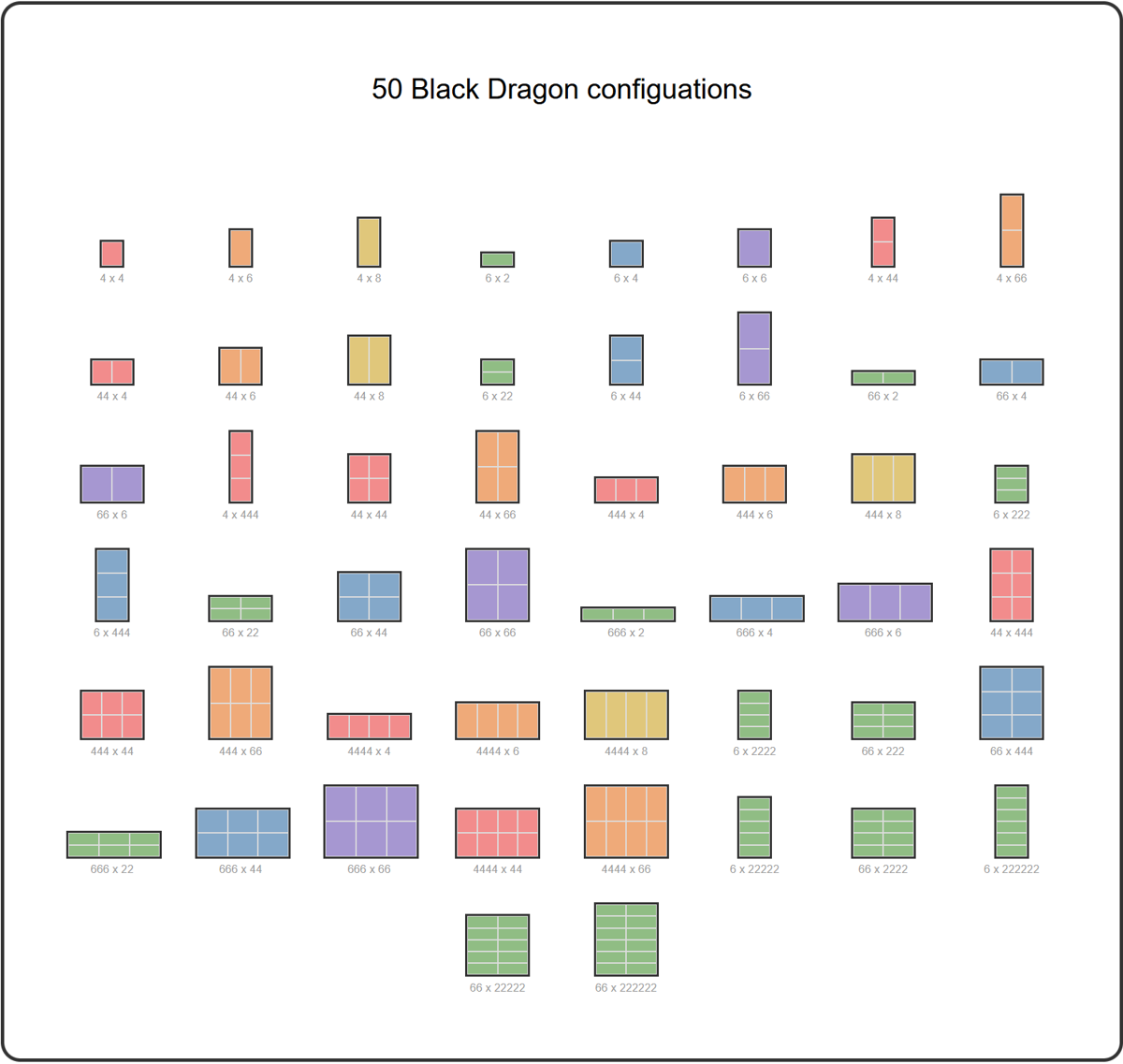

Composite Traits
(It's not necessary to understand composite traits to make composites)
There are 6 composite traits.
- Cell Configuration ID: This is a reference number that describes the cell arrangement and tile aspect ratios in Join Units. (See diagram below)
- True Joins: Number of (Open edge to Open edge) joins. Joins between tiles and blanks and (closed edge to closed edge) joins are not True Joins. (Trait written as number of True Joins / number of all interior joins)
- Joined Tiles: Number of tiles joined by True Joins (Trait written as number of joined tiles / number of cells in configuration)
- Perimeter closed edges: Number of closed tile edges that sit on the composite perimeter
- Perfect Composite: Perfect Composites meet the following two conditions:
- All joins must be True joins
- All Perimeter edges must be closed
- Dragon class: Normal, Black, White (See below)
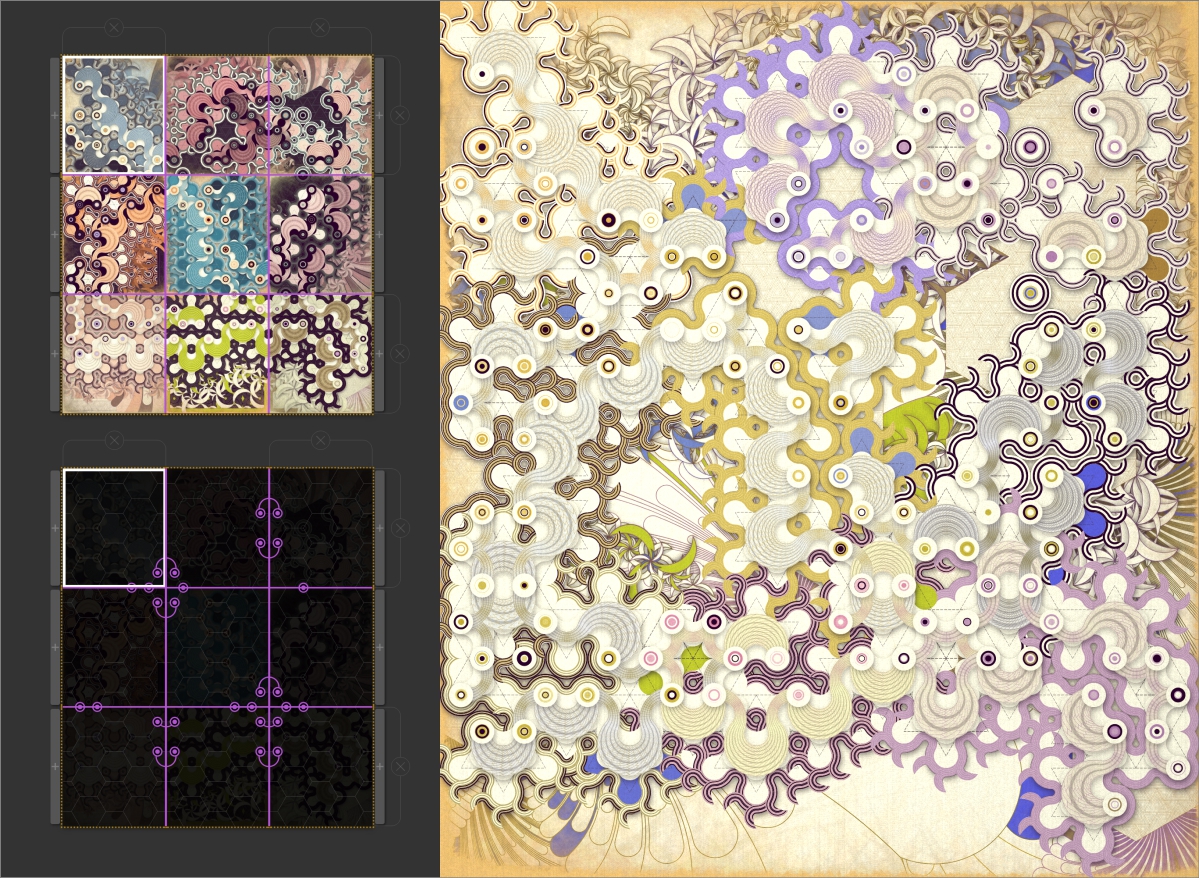
Converting Black and White Dragons
When converted a composite will automatically become a Black or White Dragon when the following conditions are met.
- Composite is Perfect.
- Composite belongs to either Black or White Dragon configuration sets.
- Each configuration can only be converted to a Black or White Dragon once.
In other words: To get a Black or White Dragon you must be the first to convert one of the special configurations as a Perfect composite.
IP Give Away
Full artwork IP will be given away with every composite mint in the Quasi Dragons Collection. Many NFT collectors do not realize the IP for an artwork nearly always remains with the artist. This means token holders can use their composite for any commercial projects or make new art with it, without asking for the artist’s permission.
Supply
- Tile supply: Tile sale ends after 500 hrs. This long period will enable collectors to continue to mint tiles needed to make Black or White Dragons if key tiles are not available.
- Final composite supply: The final composite supply is unknown but we can say it will be approximately equal to the final tile supply divided by the average composite size.
In a previously proposed model Black and White dragon set completion closed the tile supply. This is no longer the case. Black and White Dragons may or may not all get converted. There is no time limit for composites to be converted after tile supply closes.